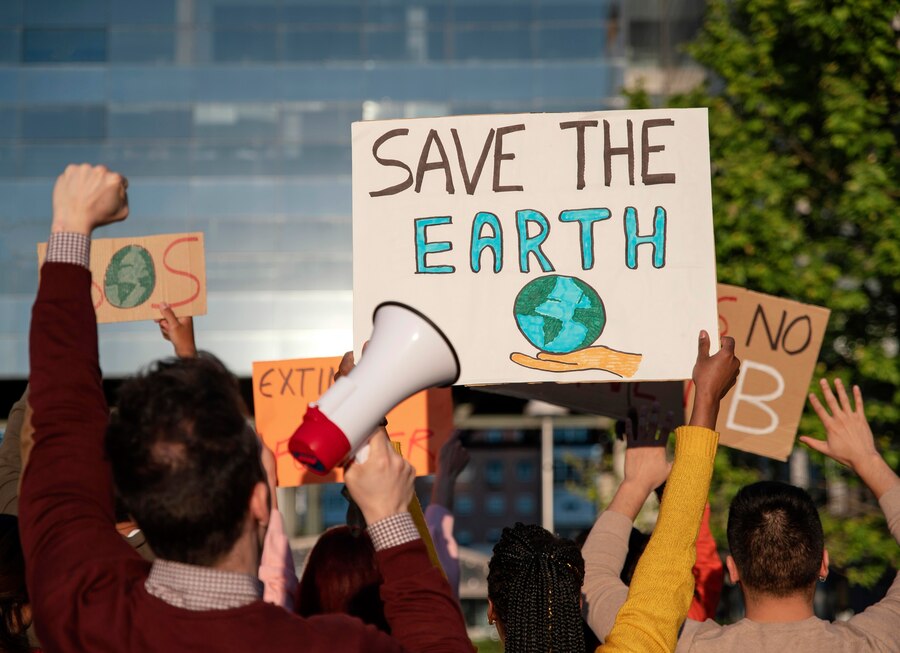
It is March again, which means that Earth Hour, the yearly lights-out event, happens on the last Saturday of this month.
First organized by the World Wildlife Fund (WWF), the Earth Hour event is a global environmental movement participated by countries and territories around the world and millions of people across the globe, as part of a commitment to saving the planet.
Within the one hour of the event, Earth Hour aims to raise awareness by turning off non-essential lights. Collectively, these Earth Hour activities can spark global conversations and result in material change to help preserve the planet.
The need for community effort in the Earth Hour Movement
At its core, Earth Hour depends on the strength of the population to rally together and impact policy changes that address the climate crisis. This means that Earth Hour today endeavors to elevate beyond the hour and rally the activity as a community effort for it to be effective.
Collective Impact
When entire communities participate in Earth Hour events, the collective impact is much more significant than individual actions. This community effort also becomes a collective climate action. As a result, this sends a powerful message about the importance of environmental conservation and sustainability.
Awareness and Education
Community involvement in Earth Hour provides an opportunity to raise awareness, educate people about the environmental challenges our planet faces, and tackle climate change seriously.
It serves as a platform to discuss the broader issues of climate change, energy consumption, and the need for sustainable practices.
Inspiration and Motivation
Seeing neighbors and community members actively participating in Earth Hour can be inspiring to others.
This results in the adoption of more sustainable habits in their daily lives, which can ripple out into the broader commitment to protecting nature. Overall, this creates a positive social environment that encourages responsible and eco-friendly behavior.
Community Engagement
Global movements often begin as community movements. Not only do Earth Hour campaigns foster a sense of community engagement and togetherness, but they also encourage people to come together for a shared cause.
This then reinforces a sense of unity and responsibility towards the environment. As such, celebrating Earth Hour as a community can become the catalyst for the formation of a global grassroots movement.
Local Solutions for Global Problems
The climate crisis is a local problem as much as it is a global one. While climate change remains a problem that needs global participation, holding local Earth Hour events localizes the understanding of the climate crisis.
Moreover, communities are often more attuned to local environmental issues and challenges. As such, Earth Hour can serve as a starting point for communities to address their specific environmental concerns.
Lastly, it can be a platform to develop localized solutions that contribute to the global fight against climate change.
Policy Advocacy
A community movement during Earth Hour can encourage people to support efforts to push for environmentally friendly policies at the local and national levels.
Communities can leverage their collective voice to push for changes that address climate change and ensure a sustainable future for the next generations.
Behavioral Change
The shared experience of Earth Hour stories can contribute to lasting behavioral change.
Communities that actively engage in Earth Hour activities may continue to be more conscious about environmental issues and sustainable practices beyond the designated hour. This then leads to long-term positive impacts.
Global Solidarity
Earth Hour is a global event that unites people around the world in a common cause. By participating as a community, individuals contribute to a global environmetal movement and demonstrate their solidarity in the face of climate challenges.
Setting a Precedent for Action
Community involvement in Earth Hour can set a precedent for taking collective action on other environmental issues. As such, the Earth Hour platform can serve as a foundation for ongoing community-driven initiatives aimed at creating a more sustainable and resilient future.
This way, the community also ensures that the Earth Hour movement continue beyond the lights-out event.
Overall, the Earth Hour event is a promising platform for spreading awareness until the movement earns public support to materialize change. This support can then be channeled to help reverse nature loss and preserve the natural systems for future generations.
The beginnings of Earth Hour
The Earth Hour celebration originated from the efforts of the World Wildlife Fund (WWF). The inception of this global movement can be traced back to the inaugural Earth Hour event, which took place in Sydney, Australia, in 2007.
The Earth Hour co-founder, along with other organizations, conceptualized the idea of a worldwide symbolic act to raise awareness about climate change.
As a result, the first Earth Hour event encouraged individuals and communities to turn off non-essential lights for one hour at 8:30 pm local time, creating an impactful demonstration of unity.
This WWF-initiated Earth Hour quickly gained momentum as people around the world embraced the concept.
Since that initial event, Earth Hour has evolved into a global phenomenon, engaging millions of participants annually. More importantly, it now serves as an annual reminder of the collective responsibility to address environmental challenges.
Examples of community effort during Earth Hour

Today’s Earth Hour is joined by communities from over 190 countries worldwide. These communities participate in small- and large-scale efforts that result in a substantial impact altogether. One notable initiative is the Earth Hour City Challenge.
In this event, cities around the world rise to the challenge of making ambitious commitments to lower carbon emissions. Over the years, this became a platform that encourages local governments to be more competitive in implementing eco-friendly policies and showcase their achievements during Earth Hour.
Additionally, many communities around the globe join the annual Earth Hour Lights Out event. Other communities have also embraced the concept of Earth Hour Forest, which includes tree-planting activities to contribute to reforestation efforts and combat deforestation.
These community-driven endeavors during Earth Hour showcase the global commitment to fostering environmental stewardship.
Ultimately, these activities emphasize the need for collective community action to address the challenges our planet faces.
Sustainability starts at home.
Aside from community action, sustainability and a greater environmental consciousness start at home.
Choose a community where you have the option and support to make more environmentally conscious choices. See how you can achieve this in Camella.

Celebrate Life’s Milestones in Camella!
Make unforgettable memories in a Camella home.
Our communities are designed to elevate your living experience.


